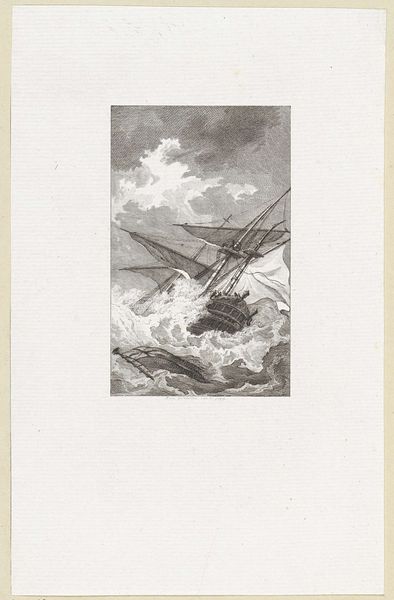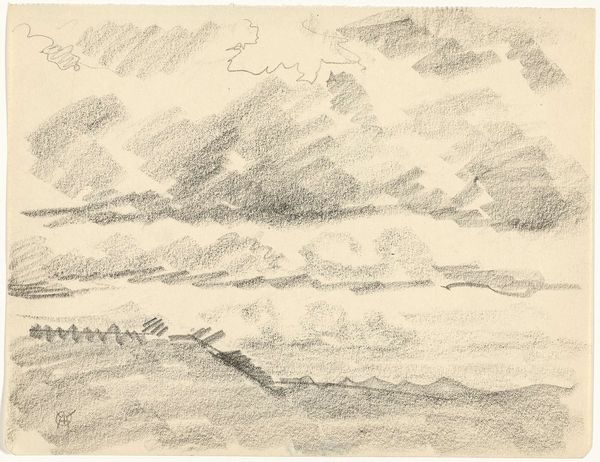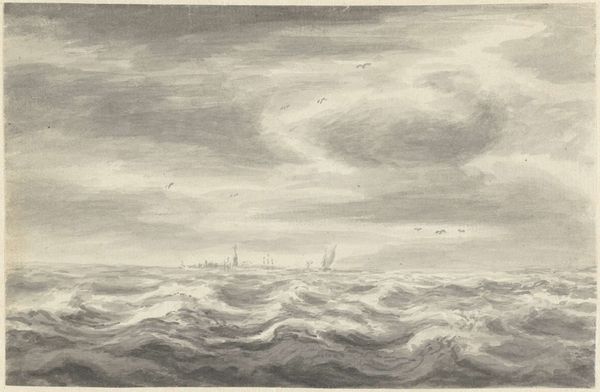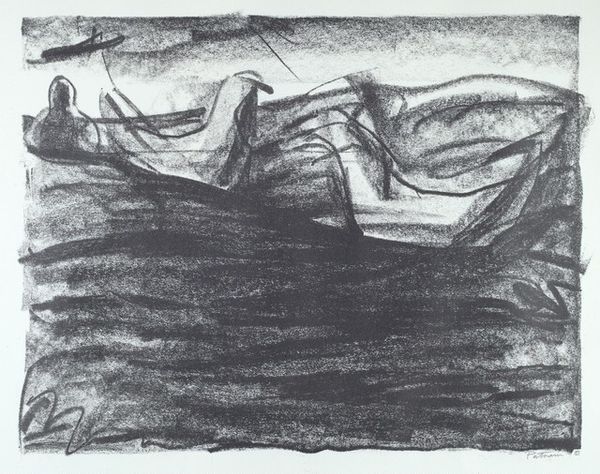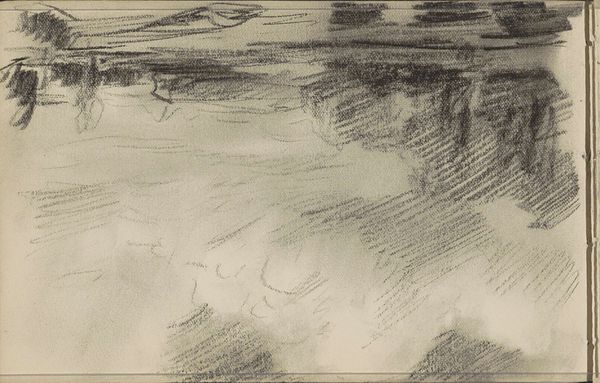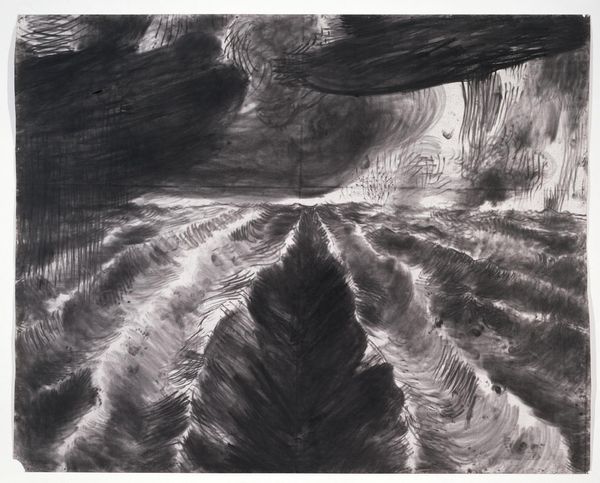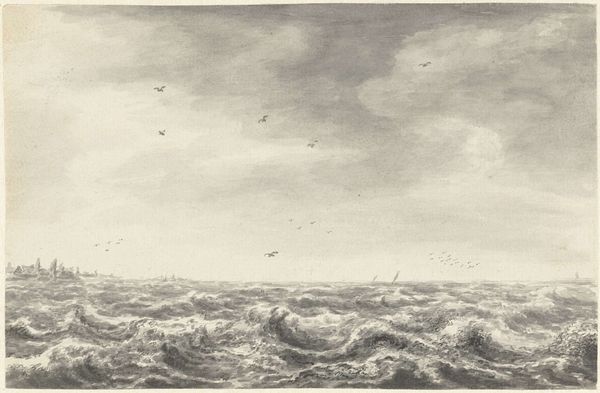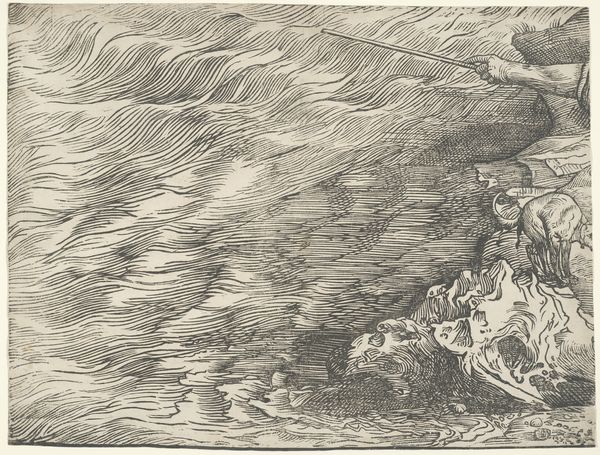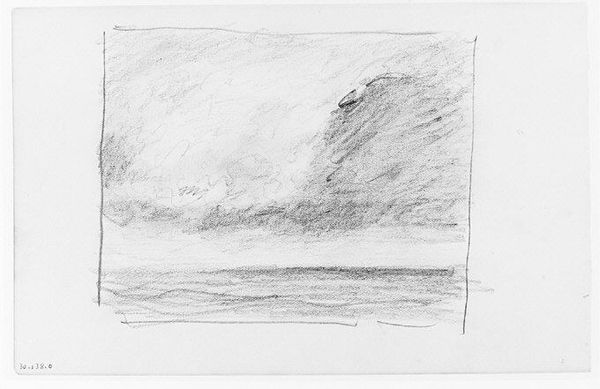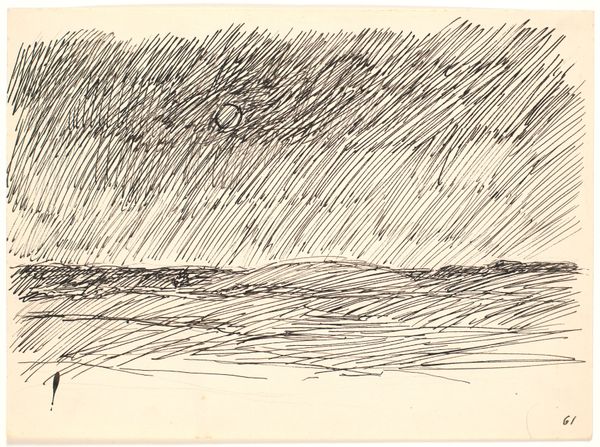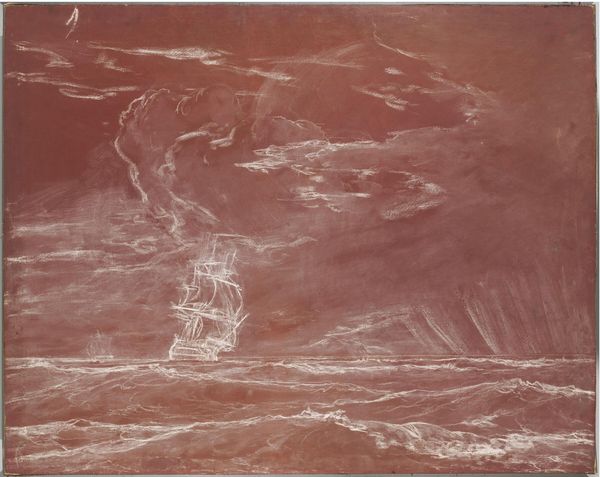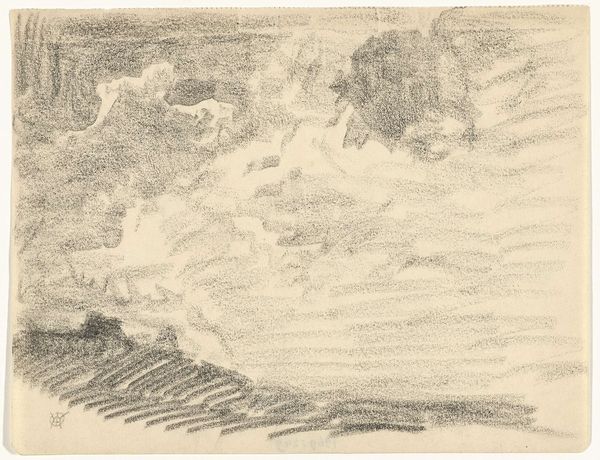
drawing, print, paper, pencil
#
pencil drawn
#
drawing
# print
#
pencil sketch
#
landscape
#
paper
#
pencil drawing
#
pencil
#
realism
Dimensions: image: 202 x 270 mm sheet: 290 x 406 mm
Copyright: National Gallery of Art: CC0 1.0
Curator: I'd like to draw your attention to Dorothy Jeakins's "Storm Sky," likely created around 1937. It’s a pencil drawing, and there's a strong sense of realism in its depiction of a turbulent sky over what appears to be an open landscape. Editor: My immediate reaction is that of somberness, almost oppressive. The artist uses intricate cross-hatching to conjure these immense, looming clouds. It's dramatic, really, a study in monochromatic grays. Curator: Consider the historical context, though. This was created during the Great Depression. Could Jeakins' choice to depict such a foreboding scene be a reflection of the anxieties and uncertainties of that era? The public role of art during times of upheaval… Editor: A compelling point. But let's look closer at the compositional elements. The diagonal lines of the rain, almost slashing across the paper, create a strong sense of movement and unease. And the texture she achieves with the pencil is remarkable, evoking the weight and density of the clouds. Semiotically speaking, these act as representations of chaos, as visual signifiers. Curator: Precisely! Artists like Jeakins weren’t working in a vacuum. Art during this period often served as a means of social commentary, either directly or, as perhaps here, more subtly through metaphor. Images like this potentially reflected broader economic or agricultural misfortunes impacting people at this time, influencing both production and perception. Editor: Even without the socio-political context, one can still read it as a powerful study of light and shadow. Notice how the artist uses the white of the paper to suggest fleeting breaks in the cloud cover. There's a tangible contrast between the dark storm clouds and the lighter horizon. Curator: Agreed. And while your focus on formalism unlocks critical interpretive keys, acknowledging that imagery functions politically, shapes responses and emotions. How works such as ‘Storm Sky’ are exhibited in galleries, and later framed and shared can shift its socio-political narrative. Editor: In the end, isn’t it fascinating how a simple drawing, made with just a pencil on paper, can elicit such strong feelings and generate such diverse interpretations? Curator: Indeed. It reminds us that art's impact is multifaceted, shaped both by what the artist puts in, and the historical, cultural circumstances under which audiences engage with it.
Comments
No comments
Be the first to comment and join the conversation on the ultimate creative platform.

